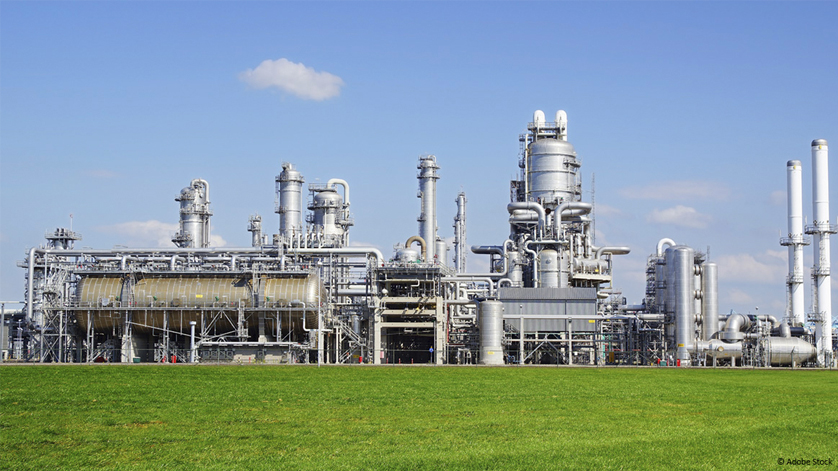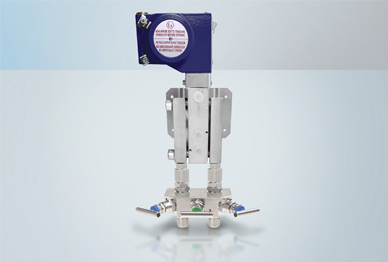
Differential pressure switches take on central tasks within monitoring and control. A manufacturer of filter systems for the process industry uses the WIKA model DE switches with an attached valve manifold for these functions. The decision in favour of this solution was based on two reasons: on the one hand, the quality of the measurement technology, on the other hand, the direct connection of both parts of the measuring assembly through standardised connections.
WIKA manufactures the differential pressure switch and the corresponding valve manifolds in accordance with the international IEC 61518 standard. Accordingly, both the switches and the valve manifolds have pressure connections with a spacing of 54 mm. An assembly is therefore possible without additional adapters and hoses or pipe elbows. This minimises the number of potential leak points. This property, in turn, increases process reliability, which is of considerable importance in processes with critical media.
Monitoring of all filter systems with only one measuring system

WIKA measuring assembly of model DE differential pressure switch and a model IV31 3-way valve block: Due to the standardised connections of both parts of the system (54 mm spacing), the number of potential leakage points is minimised.
In the search for a suitable measuring solution, the manufacturer of filter systems found out that it was by no means mandatory to combine the measuring instrument and instrumentation valve with millimetre precision and without needing an adapter. The WIKA combination now puts them in a position to monitor their filter systems with just one measuring system, in a customer-specific or industry-specific design.
Various functions are assigned to the monitoring. If a defined limit value is reached, the differential pressure switch emits a warning signal, for example: The filter has become clogged and action is required. The instrument can also trigger an automatic cleaning process or switch to a clean filter. The DPDT version with two microswitches, on the other hand, makes it possible to fulfil two functions simultaneously – for example, sending an alarm signal and switching to the redundant filter. With this variant, alternatively, one microswitch can also be configured as a backup for the other.
Differential pressure switch with two integrated overpressure valves
The DE differential pressure switch also supports process reliability in terms of its construction. Two pressure relief valves are integrated within it, which secure the static pressure on the diaphragms and thus protect the measuring element from damage. The valve manifolds of the measuring arrangement (3-way or 5-way) attached to the switch keep the process sealed, via the two shut-off valves, if the measuring instrument has to be removed for maintenance work or recalibration. One-sided overpressure is prevented by the compensating valve. 5-way valve blocks also offer the option of being able to vent both pressure sides.
WIKA offers expert assembly
At the customer’s request, WIKA will expertly assemble measuring instruments, such as the differential pressure switch and the appropriate instrumentation valve. Such an instrument hook-up is leak-tested and delivered ready-for-installation.
Note
You can find more information on the differential pressure switch model DE and the 3-valve and 5-valve manifolds (models IV30 and IV31 and models IV50 and IV51 respectively) on the WIKA website. If you have any questions, your contact will gladly help you.
Also read our posts
Safe filter monitoring with differential pressure gauges
Filter monitoring: A crucial component for energy-efficient operation
Combination of pressure measuring instrument with accessories: Hook-up instead of own assembly
Electronic differential pressure measurement for level monitoring
Monitoring the level in liquid gas tanks with a Cryo Gauge
You can also find out more about instrumentation valves in the following video:

